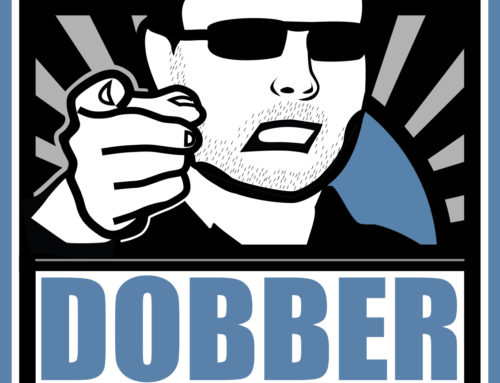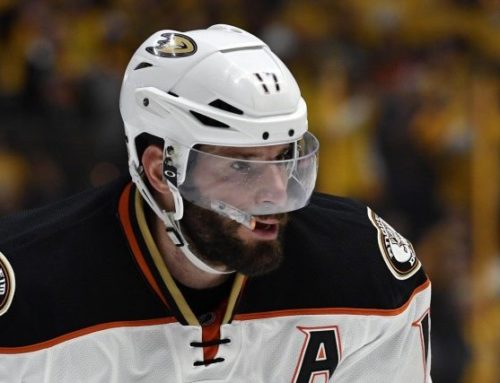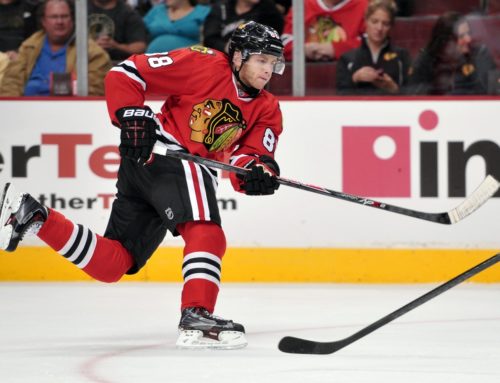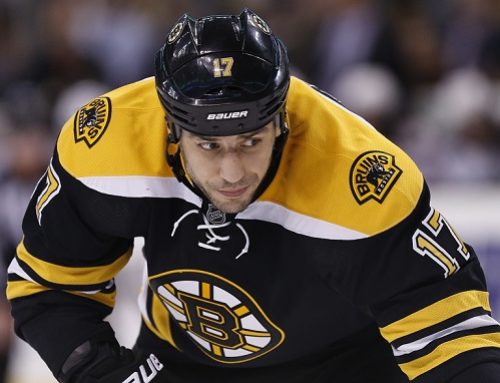
Looking at the potential fantasy hockey implications of 3-on-3 overtime.
It looks like the NHL is heading towards adding 3-on-3 overtime hockey based on the model being experimented with in the AHL this season. It's a good move, based on these numbers just under a quarter of all games at both the NHL and AHL level go to overtime. At the NHL level 10.7% of games are decided in overtime and a further 13.8% have to go to shootout. The numbers were similar for the AHL but with a slightly higher portion of games going to the shootout with just 4-on-4 overtime. Adding 3-on-3 overtime has reduced shootouts to just 5.6% of games a reduction of 10% from last season's 15.6%. That's huge, just think about the fantasy implications.
There are 1230 NHL games every year and currently 13.8% of them go to a shootout. Drop that to just 3.8% and you have 123 extra games decided by an actual goal that will count in fantasy pools. That's a potential 369 extra points to be distributed.
That's not an exact extrapolation of course, let's say instead of dropping by 10% we see the NHL 3-on-3 overtime reduce shootouts to the same level we've seen at the AHL level this season (5.6%). In that case we'd still see an extra 101 games decided through an actual goal that counts in pools and potentially 303 points that could be spread around.
The AHL has actually seen scoring climb from 5.34 goals per game last season to 5.76 this season. That's a greater jump than the added scoring from increased overtime goals can account for but still shows that the increase in overtime scoring has helped add real offense to the AHL game.
Who is going to score these extra goals?
The good news is that something like 100 extra goals won't really affect outcomes for goaltenders that drastically. Goalies work with sample sizes where a couple extra goals won't throw things massively. It should be noted that the league average save percentage is .914 so the difference between an average goalie and a good one – the top 15 goalies this season have a .920 save percentage or higher – is six goals over the course of 1,000 shots. Starting goalies face between 1,500 and 2,000 shots a season. If each team is allowing an extra three goals, that might cause a drop in save percentage by .001-.002. That's not negligible but not substantial either.
Of course, as with skaters above, randomness will occur. Certain teams will lose much more frequently in overtime at 3-on-3 than others. Those teams, most likely the weaker ones will see their goalies continue to suffer even more. Three extra goals across 1,750 shot attempts might not move the needle much but 12 extra goals would. So a team get banged on a lot more frequently could see some serious losses. An extra 12 goals across 1,750 shot attempts would mean a drop in save percentage by .007. Remember that the difference between an average goalie and a good one is .006 percent. We could in theory see some losers on the goalie front.
Consider the example of Kari Lehtonen who has a 2-7 record in games decided in overtime this season. If those seven losses never happened and instead the game went to the shootout his save percentage would be sitting at .909 instead of .905 where it currently sits. He'd still be having a bad season and he'd only climb one spot on the league save percentage list but it could be meaningful.
That's not exactly how things would work though. Games extending into 3-on-3 before going to the shootout would mean more shots for goalies. More high percentage shots but still more shots and thus the opportunity to make more saves. We can't merely add an average of three goals per team to the same volume of shots goalies normally face because in reality they will be facing slightly more shots as well. But working up a model to project how many extra shots might be faced is beyond my expertise.
I think it's fair to approximate that while league save percentages will slump slightly as a result of the extra 100 goals being added for most goalies that impact will be negligible relative to the league average. Some goalies – I'm looking at those for Edmonton, Arizona and Carolina here – may face steeper drops because of the quality of the team in front of them.
How sustainable will this be?
It could be that just like scoring spike in 2005-06 that what we are seeing in the AHL is simply a one-off and once coaches adapt to 3-on-3 they'll figure out a way to stifle offense in that environment as well and the number of games reaching the shootout will go up. Fortunately, the AHL will continue to serve as our window to the future. If next season shootouts go up in the AHL then we know that any small spike in scoring we might see could vanish in a hurry.
Some good news on that front is that the percentage of shoots we see each year hasn't changed all that much since we switched to 4-on-4 overtime. It is true that the fewest percentage of games ending in a shootout came in the first year of 4-on-4 overtime in 2005-06 at 11.8% but the percentage has floated between 12.1% and 15.0% ever since. That's well within the margin of error to suggest that coaching hasn't had much of an impact on stifling play at 4-on-4. One might even suggest that you'd solve plenty simply by extending 4-on-4 overtime beyond the five minutes that they currently play and you'd get a similar result to switching to 3-on-3. Whether that's true or not, the point remains that it will seemingly be difficult for coaches to strangle scoring out of 3-on-3 since they haven't had much success doing so at 4-on-4.
What does it all mean?
Ultimately, not a whole lot. Scoring has sat right around the 5.33 goals per game that it's at this season for four years running. A spike of 100 extra goals wouldn't even get us back to where we were in 2010-11, the last season of before we reached the status quo. That season the NHL averaged 5.46 goals per game, which still isn't impressive.
All told, that 2010-11 season wasn't even all that impressive for fantasy. It saw only one 50-goal scorer (Corey Perry) and one 100-point scorer (Daniel Sedin). You have to go back one year earlier to find a season with multiple 100-point scorers. That's not to say that those days are dead, just that 3-on-3 overtime isn't going to be what brings them back.
3-on-3 also doesn't resolve the massive issue with the loser point creating false parity. Some games being worth two points and others being worth three is just illogical. Change the number of players competing against one another all you want. Until you resolve the discrepancy in the value of some games the NHL still has a problem. But, if 3-on-3 means a few more goals and a sizeable chunk more games that I don't shut off before knowing the winner because I refuse to watch the shootout then that's fine by me!
*
You can follow me @SteveLaidlaw.





 EDM
EDM FLA
FLA CHI
CHI ANA
ANA L.A
L.A MTL
MTL VGK
VGK
